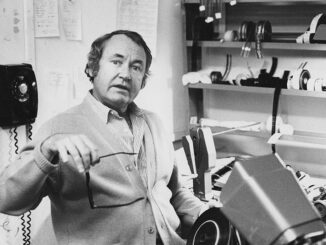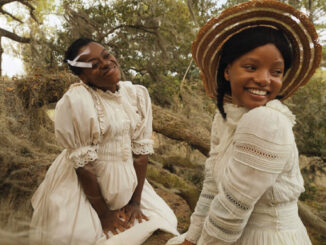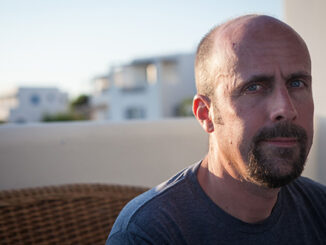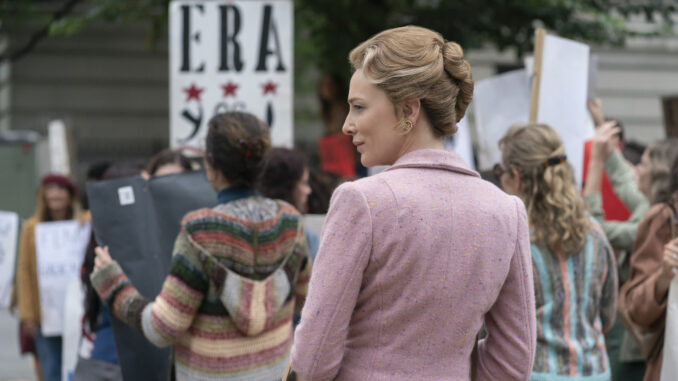
by Patrick Z. McGavin
The new FX series “Mrs. America” examines the political fault lines between the conservative political activist Phyllis Schafly (Cate Blanchett) and the insurgent women’s movement embodied by Gloria Steinem (Rose Byrne).
The nine-part limited series, which started streaming on the Hulu platform in April, captures the ferocious political maneuvering over the attempted passage of the Equal Rights Amendment (ERA) in the late 1970s.
Editors Robert Komatsu and Emily Greene worked closely together on the series. Komatsu, who studied film at UCLA, edited the pilot, fourth and seventh episodes. Greene studied film theory of the University of California and attended the national film school in Rome. She edited the second, fifth and eighth parts.
In an interview, the two editors talked about the excitement and challenges of revivifying this colorful and vibrant early example of America’s ongoing culture wars.
CineMontage: What attracted you to this project to begin with?
Emily Greene: This is something that had been on my radar for quite a while. I heard about the show and I had expressed interest to my agent. Through an editor friend, Chi-Yoon Chung, I was asked to interview [the filmmakers] Anna Boden and Ryan Fleck.
The show is something that really speaks to me. I am really interested in historical pieces. I love the idea of a limited series. There’s something magical where there is a story to be told. I loved the topic, with issues today that we are still fighting and something that really spoke to me.
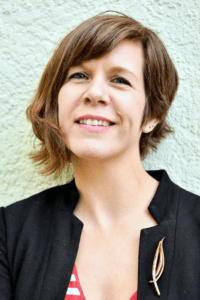
Robert Komatsu: My agent told me what the subject matter was about. I really like political dramas, with journalism and investigative stuff, like “All the President’s Men” (1976). Then I found out Davhi Waller, the show runner and creator, wrote it. We had a connection from “Halt and Catch Fire.” I read these scripts, and I could not see myself not doing them based on the writing, the actors and directors.
Was there any particular research you did to familiarize yourself with the time, the culture and the politics?
Greene: I hit the ground running watching a lot of the archival material that had been pulled from the show, and I learned quite a lot. I talked with my mom a bit about her experience. My parents and her generation went through that. My mom had a friend who went to law school with Phyllis Schafly. I had a lot of learning to do, but I was surprised sadly how pertinent a lot of the issues to what we are still up against today.
Rob, you edited the first episode and Emily cut the second. Did you talk about how to create continuity from the first to second episode?
Komatsu: We’d show each other our stuff. It was like a three-point process. Emily and I would show each other a scene. We were sending scenes to Anna and Ryan a few times a week as well, and they would give feedback. We would refine and keep sending things back.
A lot of the early collaboration was in music because early in prep, Anna and Ryan wanted to talk about what temp scores to use. We made a bunch of bins, for different moods, “contemplative,” “drive,” or “tension,” and we’d throw these into the bin and start listening to each other’s bins and then we made a joint bin and sent it to Anna and Ryan for their feedback.
Greene: In the beginning, one of the hardest parts was finding the sound of the show. I think there was a bouncing off ideas between myself and Rob. “Does this work for the feminists, and this sound for the anti-feminists, and try to find something thematic for Phyllis.” There was a lot of trial and error.
The pilot deals a lot with Phyllis Schafly. Episode two deals a lot more with Gloria Steinem and the feminists. There is definitely a different look to the shooting styles. The Phyllis part is very composed, with a lot of locked off cameras, the framing was very central. With the feminists, it was very handheld, the cutting pattern had a little bit more freedom.
There are moments of crossover between episode one, where there was more Phyllis, and vice verse with Gloria and episode two. Rob and I definitely bounced off ideas. I’d say, “How did you cut that scene, because I want to show you this.” That was a lot of fun because it did create what I’d consider a certain unity and a fluid feel to the episodes we shared.
Anna Boden and Ryan Fleck are coming off directing a Marvel movie, but their roots are in independent cinema. What was the working dynamic with them like?
Greene: When we first met with them, they looked at us and asked us if we had ever worked together before. I said, “No, but we really get along.” They just noted how united we were from the start.
Rob and I are very similar in that [we believe] good work comes from collaboration. The more you allow another editor to weigh in, the better your episode is going to be. We really understood the camaraderie they understood as directors. We certainly shared that as editors.
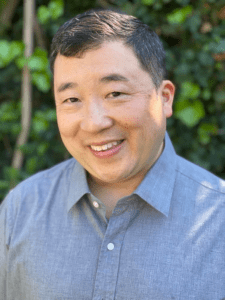
Komatsu: On a normal one-hour drama, you have a four-day director’s cut and then they are gone. With Anna and Ryan, it was very different. For one, they had a 10-days directors’ cut, and they basically bounced back and forth from Emily and my room. They never left. We’d work on our episodes with them for months, and it was very much like a feature. They were not guest directors. They were running the show, along with Davhi.
The show does not just reanimate a particular time in American politics, but the larger than life personalities who shaped the debate, with Phyllis Schlafly, Gloria Steinem or Bella Abzug. What role does the cutting play in crafting these performances?
Komatsu: I will say, for one, almost to a maniacal effect. Anna and Ryan, and therefore Emily and I, would police these performances. If there was any hint of, that’s Cate Blanchett, that is not Phyllis, it was out. The same with all the other actors. Anna and Ryan tend to go for extremely subtle, downplayed performances.
Greene: We wanted to make sure that nothing was too broad. Many of them are larger than life personalities, and if you go with a bigger performance, then it almost becomes unbelievable. We definitely searched for the nuanced, and something Anna and Ryan felt was more believable. The actors were incredible. It was definitely an embarrassment of riches. They gave us a lot of great performances. It was a joy to cut these actors.
You have this great clash right at the heart of the series, between traditionalism and modernity. Would you say the editing is meant to heighten that clash?
Komatsu: Part of it is the shooting style of Anna and Ryan. Camera moves were very classical and restrained with Phyllis. With the feminists, it was mostly handheld, a controlled chaos. That definitely dictated the editing style.
Greene: Something that we worked on with Anna and Ryan and the other director that was very important was the transitions between the two sides. If we are transitioning from one to the other, the punctuation between the two scenes is always something we want to bring to light. That definitely affected my editing style, and it was something we were looking for. How could we marry these two sides, but at the same way bring out their differences.
The historic conflict was also about the repercussions of the sexual revolution. Did you talk about that with Anna and Ryan and how to work that into the material?
Greene: It was a time of sexual revolution, and some of the characters were experiencing what it was like not only to be with a man but also a woman. Bisexuality and the sexual revolution are definitely themes that are touched upon and play a great contrast to what Phyllis Schafly was promoting the traditional role of wife and mother who stays home and raises kids. Those contrasts were highlighted in each episode.
As you complete the season and reflect on what you have accomplished, what was the most satisfying or thrilling part creatively or artistically?
Greene: For me the most satisfying aspect of everything was the trust between myself and Rob, and also Anna and Ryan and also Davhi, the show runner. To be able to work and collaborate with a really smart team where nobody has the best idea, and everybody is open.
I remember cutting a scene for episode two, and I sent it off to Anna and Ryan. Anna replied: “Wow, I did not think of ending it that way. I loved that idea.” There was a lot of open dialogue about being able to experiment, especially with the archive. It was a very challenging but creative process. I felt like I could really shine and throw myself out there and experiment and be able to work with Anna and Ryan. They are such good listeners. They really value the opinion of the editor.
Komatsu: I could count a number of times where Anna and Ryan or Davhi would say this is what we are going to do for this scene. If I felt strongly, I would plead my case to do something different. They’d say: “We absolutely get it. Let’s use that idea instead.” They let us be passionate and use our own voice. I thought that was pretty amazing.
I had a lot of split screens in the series. It was a surprise, because it was not written into the scripts. In the pilot, Anna and Ryan said: “We are going to shoot this as a split screen sequence.” I said, “What kind of split screen?” They said, “We don’t know yet.” I remember I put together three different concepts, tested them and tried different things.
Eventually we landed on something that evoked “The Thomas Crown Affair,” the Steve McQueen version (1968). At the end of the split screen sequence, I have a section where nine panels of different women appear on the screen, one at a time, three across and three down. One by one, each woman then becomes a different image, and then one by one, those images are replaced by a shot of Phyllis. The middle Phyllis expands, pushing the surrounding Phyllis shots off the screen.
In the seventh episode, Anna and Ryan said we are going to do another split screen. I did not want to repeat that. I went to the next level of what the split screen sequence would evolve to in my head. I liked how we ended with panels that moved other panels off the screen. So I used that as a starting point. A panel could bump a full framed shot halfway off the screen to share it. Those two panels might move off the screen, one flying up and the other dropping down, to reveal another image behind them.
Split screens were very fun for me, but also incredibly time consuming. They would shoot the elements of the split screen over a period of two or three months. I would have so many placeholders. It was like pulling this homemade, almost animation project and then it finally came to life. In the end, I think it was something that was really fun to have done.
The clash on the show is also an early example of what today is called the culture wars. Did you talk with Davhi Waller about making it relevant to today our highly polarized political discourse has become?
Greene: We had no idea how pertinent and relevant the 1970s would be to the present. We were in it and cutting scenes, and thinking how topical they were to what is going on today. It was exciting to know we were putting together a cultural war that is still heavily in place.
Patrick Z. McGavin is a Chicago-based cultural journalist and film critic.


